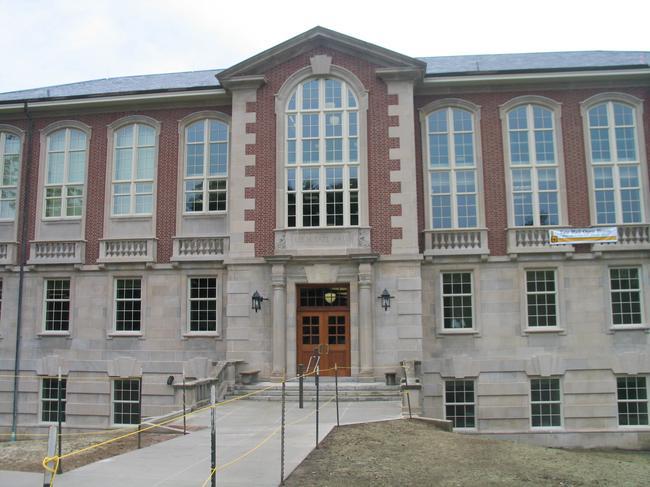
In the midst of [a myriad of summer construction projects](https://www.themaneater.com/stories/2011/6/1/mu-braces-summer-season-construction/), MU hosted an open house for two newly renovated halls, Tate and Switzler. Both will be ready for classes in the fall.
Associate Vice Chancellor for Facilities Gary Ward said the buildings require just a few finishing touches before completion. The main focus of the renovation projects, he said, was cost effectiveness.
“We don’t want the best pipes, we want the best academic profile,” Ward said, “We wanted something that would look good, but wasn’t over the top.”
Participants on the tour were very pleased with the final products.
In the end, the total cost of the renovation was $15 million. Of this cost, $8 million was for Tate Hall and $7 million was for Switzler Hall.
“During these tight budgetary times, we created a new stewardship renovation model that emphasizes sustainability and financial responsibility,” Ward said in a press release. “While a tour of either building will be impressive, especially to those who saw them prior to renovation, nothing inside is excessive. We are accountable to Missouri taxpayers, our tuition-paying students and their parents.”
Still, he said the buildings are efficient.
“At the same time, it is our responsibility to build or renovate buildings that are safe for our students and will last for many years to come,” Ward said.
One way the builders accomplished cost effectiveness was the re-use of certain materials. While both buildings were gutted, several items were kept and used in the revamped buildings. Light fixtures, columns, emergency exit signs and similar items were reused. Switzler is MU’s oldest academic hall and the second oldest building on campus next to the Chancellor’s Residence on Francis Quadrangle. An 8,000-square foot addition was added to the building as well.
Several other methods were used to reduce the cost of the projects.
“Requests for architects’ qualifications were submitted electronically, resulting in significant time savings,” the press release said. “Materials were chosen for their durability and availability close by.”
One contractor was used for both building renovation projects.
Low-interest bonds funded the projects, and these will be paid with money that was originally intended for the buildings’ maintenance and repair.
There are still about 30 buildings requiring renovations according to Campus Facilities, [including Jesse Auditorium](https://www.themaneater.com/blogs/live-blog-june-2011-board-curators-mee-2011-jun-15/2011/6/16/jesse-auditorium-receive-faceliftt/).
“The work (on Jesse Auditorium) will replace all aisle seat standards and all moving seat parts including new seat upholstery, refinished of seat backs and seat pans, repainting the concrete floors under the seat and replacement of all carpet in the auditorium and lobby,” the Board of Curators’ Finance Committee’s Physical Facilities Quarterly Report said.